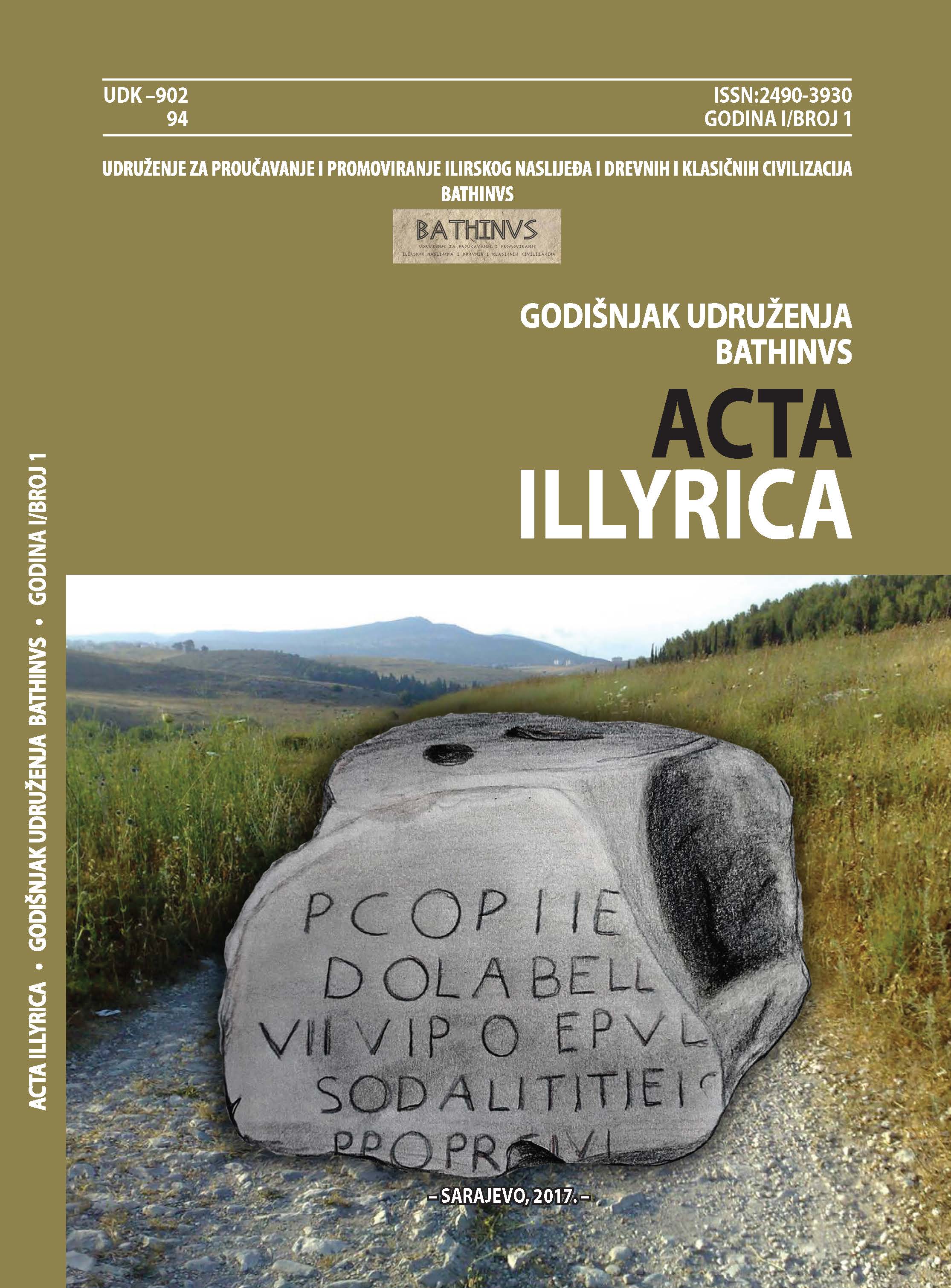Illyrski antroponimi na latinskim natpisima Dalmacije
Illyrian anthroponyms in the Latin inscriptions in Dalmatia
Author(s): Dijana BeljanSubject(s): Language and Literature Studies, Philology
Published by: Udruženje za proučavanje i promoviranje ilirskog naslijeđa i drevnih i klasičnih civilizacija “BATHINVS”
Keywords: formation of names; illyrian language; repertoire of illyrian names; name formula; patronymic;
Summary/Abstract: Since it is part of the Indo-European language family, the Illyrian language shows some Indo-European regularities that we can also observe in the Greek and South Slavic world. According to Fick-Bechtel, whose work follows that of Rendić-Miočević in his work Ilirska onomastika na latinskim natpisima Dalmacije, names can be divided into complex names, derivations and abbreviated/hypocoristic names. Due to the lack of historical data, it is far more difficult to categorize Illyrian names compared to their Greek and Slavic counterparts. Inscriptions in Dalmatia carry names such as Ditus, Tritus, Boria, Nebris, Enena, Illyrica, Dalmatius, Breucus, Ana/Anna, which are possibly derived from numbers, names of deities, ethnicities or even nicknames. Some also show complex names from the Indo-European family, although only a few remain in historical records: Scenobardus, Cursulavia, Scenocalus etc., names whose shortened versions we also find (Sceno, Lavus, Lavia) and substantiate with what we find in the Greek and Slavic world Regarding the formula for creating names, we can look at its development through the Roman formula, since the Latin language established itself within the Roman province of Illyria. A one-part name formula was confirmed both in Roman writing and history hence it isn't far-fetched to say that the same happened in the territory of Illyria. Once a single personal name became too simple for defining an individual, they began to combine it with the name of the father through filiation, examples of which we can find in Latin inscriptions from Dalmatia. Hence personal names such as Iettus, Nomeditus Plato, Panes, Varro were often expanded with the father designation filius, -a: Panto Madoci f., Tritano Lavi f. etc. A two-part name formula is clearly visible in examples such as Bato Baracio, Scenobarbus Tizio whose second part very quickly developed into a surname as in other Indo-European societies through the suffix -io-, -ia- (and even –iko- which does not show patronymic characteristics). That formula is almost always expanded through patronymics, that is, without filius, -a and will become the most common name form among the Illyrians.
Journal: Godišnjak Udruženja BATHINVS “Acta Illyrica”
- Issue Year: I/2017
- Issue No: 1
- Page Range: 131-147
- Page Count: 17
- Language: Croatian

